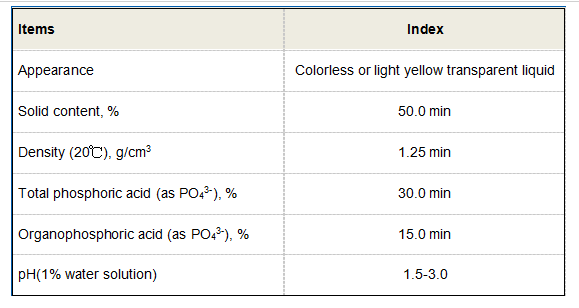Exploring the Applications and Benefits of PBTC in Chemical Processes and Treatment Solutions
Understanding PBTC A Multifaceted Chemical Compound
PBTC, or phosphonobutane-tricarboxylic acid, is a versatile chemical compound that plays a crucial role in various industrial applications, particularly in water treatment, oilfield operations, and as a scale inhibitor in industrial systems. Its unique molecular structure provides PBTC with properties that are beneficial in preventing scale formation and enhancing the efficiency of operational processes in different environments.
Chemical Properties
PBTC is characterized by its phosphonic acid functional groups, which impart significant chelating abilities. This allows the compound to bind with metal ions effectively, preventing precipitation and scale formation, particularly in systems that involve calcium carbonate and other insoluble salts. The tricarboxylic structure ensures that PBTC can interact with a variety of ions in solution, which contributes to its efficacy as a scale inhibitor. Furthermore, its stability and solubility make it an ideal choice for formulations in water treatment programs.
Applications in Water Treatment
In water treatment, PBTC is extensively used to control scale and corrosion in cooling water systems, boilers, and other water-intensive operations. By adding PBTC to water systems, the risk of scale build-up on heat exchangers and other surfaces is substantially reduced, thereby enhancing thermal efficiency and extending equipment lifespan. The ability of PBTC to disperse particulate matter further aids in maintaining system functionality while minimizing downtime for cleaning and maintenance.
Moreover, PBTC also plays a role in the removal of heavy metals from wastewater. By chelating with harmful metal cations, it facilitates their removal during treatment processes, contributing to environmental protection efforts and compliance with regulatory standards.
pbtc chemical pbtc

Use in Oilfield Operations
In the oil and gas industry, PBTC is utilized as a scale inhibitor during drilling and production processes. The presence of scale in oil wells can lead to significant operational challenges, including reduced flow rates and increased operational costs. By employing PBTC, operators can mitigate these issues, ensuring smoother production and better recovery rates. The compound’s thermal stability under high-pressure and high-temperature conditions makes it particularly suitable for use in challenging downhole environments.
Environmental and Safety Considerations
One of the appealing aspects of PBTC is its relatively low environmental impact when compared to traditional phosphonate compounds. Its biodegradability and lower toxicity profile enhance its appeal as a more sustainable choice for industry applications. However, like all chemicals, appropriate handling and safety measures should be considered to minimize exposure risks to workers and the environment.
Conclusion
In summary, PBTC stands out as a versatile and effective chemical compound that serves multiple roles across various industries, particularly in water treatment and oilfield operations. Its strong chelating properties, combined with its stability and lower environmental impact, make it an invaluable asset in modern industrial applications. As industries continue to face challenges related to scale formation and environmental compliance, the role of compounds like PBTC will undoubtedly grow, paving the way for more efficient and sustainable operational practices. The continuous advancement in research and development surrounding PBTC and similar compounds will further enhance our understanding and utilization of these vital chemical agents.
-
Water Treatment with Flocculant Water TreatmentNewsJun.12,2025
-
Polymaleic AnhydrideNewsJun.12,2025
-
Polyaspartic AcidNewsJun.12,2025
-
Enhance Industrial Processes with IsothiazolinonesNewsJun.12,2025
-
Enhance Industrial Processes with PBTCA SolutionsNewsJun.12,2025
-
Dodecyldimethylbenzylammonium Chloride SolutionsNewsJun.12,2025





